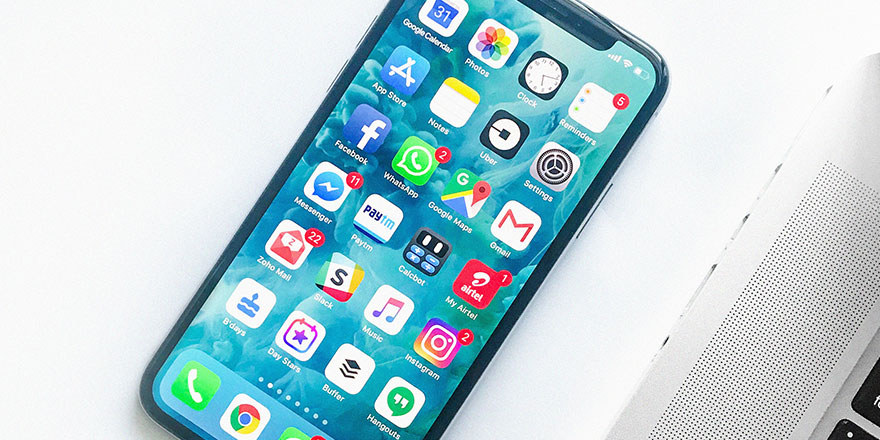
Top 5 Trends in B2B Personalization & Social Selling
Despite changing customer habits across the commerce industry, sales strategies have largely remained static. That is, until now. With a noticeable rise in account based marketing adoption and “hyper-personalization” software that utilizes machine learning, today’s sales teams are better equipped than ever to engage prospects across digital platforms; new territory for B2B companies. Here are the top 5 ways sales teams are taking advantage of new tech.
5. Stepping Up the Mobile Game
In a recent article, Genius eCommerce notes “91 percent of B2B buyers complete searches using mobile devices and one in four buyers makes a purchase using a mobile device.” With millennials making up more than 35% of the US workforce, there’s an industry-wide push to create simple, elegant, and frictionless online experiences that cater to the generation’s habits and expectations. To do this, sales teams must begin thinking like millennials and driving engagement through smartphones, their device of choice.
For millennials, a downloadable product list doesn’t go a long way, especially on a phone. It’s too time consuming, and millennials know there’s a high probability another company (i.e. your competitor) will have a simpler online experience that shortens their workday and makes their lives easier.
4. Increasing Repeat Purchases
Redstage CEO Adam Morris notes, “Modern B2B sales teams have begun tracking online customer behavior to predict when customers will need to reorder. These teams can use the same tech to order on behalf of customers and even set up automatic subscription reordering.”
These options remove strain from the customer’s decision to buy and encourage repeat purchases. Send a simple reminder to customers recommending they buy again or to buy a related product and watch AOV increase along with order frequency. Imagine what this does for sales commissions.
3. New Ways To Interact & Engage
With all these new modes of selling, teams need to broaden their reach to maximize sales opportunities. Tackling this challenge is easy with the right toolset. Chatbots act as an extension of the sales person, becoming the first-line of defense for customer assistance. Through chatbots, sales reps can help users find a product they might’ve missed, share in-depth details to make a sale, and further engage prospects in real time.
Like chatbots, social media is another tool that extends the sales team’s skillset and enhances reach. DemandGen’s 2018 B2B Buyer’s Survey reports that 34% of B2B buyers are spending more time on social media to research vendors. 52% say they use social media to drive purchasing decisions, and 82% of B2B buyers say the winning vendor’s social media content has a significant impact on their decision to buy. Using social media is much friendlier than cold-calling and helps create a community around your products. Sharing is caring!
2. The Power of Feedback
Customer reviews drive sales. End of story. In G2 Crowd’s 2018 B2B Sales & Marketing Report, 92.4% of consumers said they were more likely to buy a product or service if they were able to read reviews (5.5% were unsure, and only 2.1% said no). The reason? There’s a ceiling on how much buyers trust brands, which makes them trust customers more than the vendors themselves. According to Mashable, “Millennials, in particular, trust user-generated content 50% more than other media.”
Reviews also help sales teams identify specific product attributes consumers love. These attributes can then be highlighted, promoted, and shared with prospects who may be interested in the same products to facilitate additional orders. Positive reviews typically decrease cart abandonment, increase time spent viewing products, and of course, increase sales by helping buyers get honest, trustworthy feedback.
1. Becoming a Customer Experience Expert
A 2017 Walker study concluded that “Customer experience will overtake price and product as the key brand differentiator by the year 2020,” beating out the traditional “4 P’s” of the marketing mix. As a result, it’s now up to sales teams to lock-on to customer preferences to maximize reach and engagement. Personalization platforms like Bronto help sales and marketing teams understand the preferred devices and channels each customer uses. When it’s time for a customized message, you’ll know how to get their attention.
If you ran a shoe store and a customer came to the register, only to cancel or return their order, you would want to learn why. In the digital world, if customers put an item in their cart but later remove it, it only follows that sales teams should investigate. Maybe a confusing or lackluster product description made them hesitate, perhaps it was a question of quality, source, or price. For B2B’s, fitment is a big factor, and finding replacement parts should be easy for customers. This is the time to send targeted messaging to help narrow down customer “unknowns” and increase the likelihood of a sale.
Final Thoughts
Using customer, cart, and product data, sales teams can now identify trends faster and easier than ever, pinpoint bottlenecks in the purchasing process, and refine experiences to increase sales and customer satisfaction. For more tips and tricks B2B sales teams can use, find our free Digital Sales Engagement Handbook here, and let us know if you’re interested in enhancing your sales team with Bronto.
Recent Comments